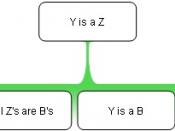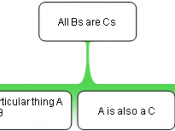Introduction
There are a number of common pitfalls to avoid when constructing an argument; they're known as fallacies. In our everyday lives, we refer to many kinds of mistaken beliefs as fallacies; but in logic, the term has a more specific meaning; moreover, a fallacy is a technical flaw that makes an argument unsound or invalid (Engel, 1999). Arguments are almost always presented with some specific purpose in mind, and the intent of the argument may also be worthy of criticism (Engel, 1999). Arguments that contain fallacies are described as fallacious, and often appear valid and convincing. Only inspecting these arguments with a very closely will reveal their logical flaw, this is why they are so tricky and hard to catch (Engel, 1999).
In this paper, I will discuss three of the most common fallacies seen in arguments: black and white fallacy, common belief, and hasty generalization. The more one knows about these little buggers, the higher the chance we will not get fooled by them.
Black and White Fallacy
The Black and White Fallacy, or the Slippery Slope, is a fallacy in which a person fails to distinguish between degrees of difference about the subject at hand (Curtis). This argument only deals with extremes, only black and white, no grey. The fallacy asserts that some event must inevitably follow from another without any argument for the inevitability of the event in question (Curtis). In most cases, there are a series of steps or gradations between one event and the one in question and no reason is given as to why the intervening steps or gradations will simply be bypassed. This argument has the following form (Curtis):
1. Event X has occurred (or will or might occur).
2. Therefore event Y will inevitably happen.
This sort of reasoning is fallacious...


